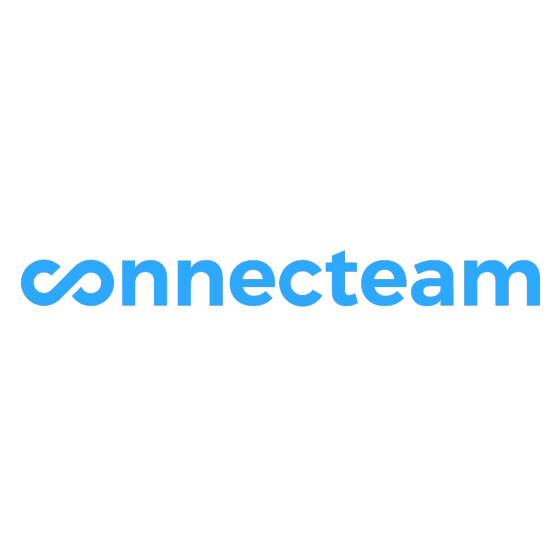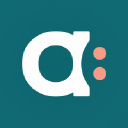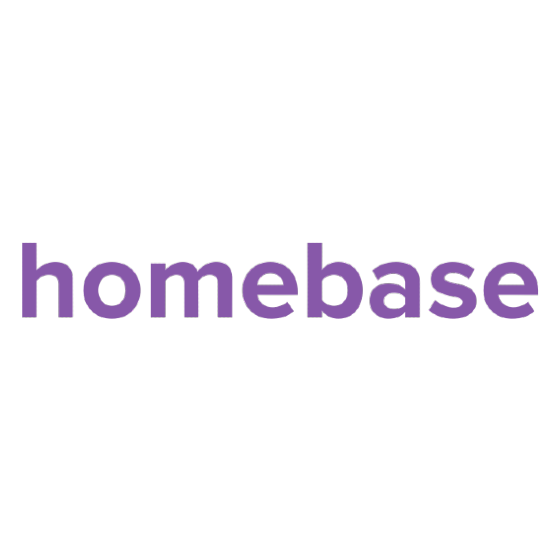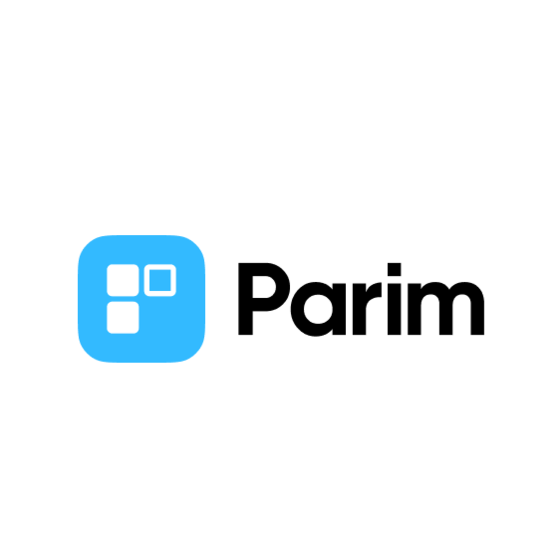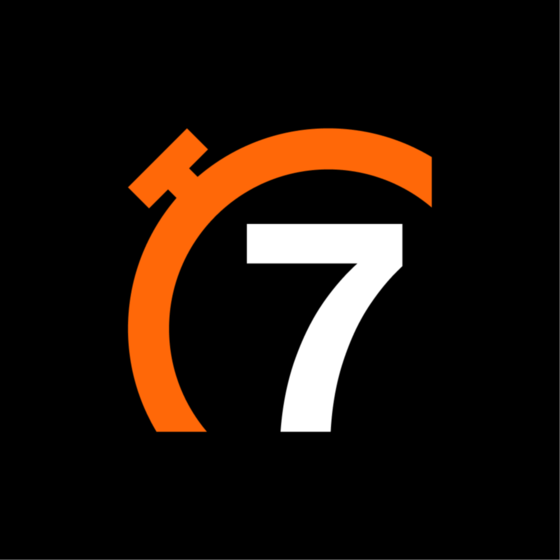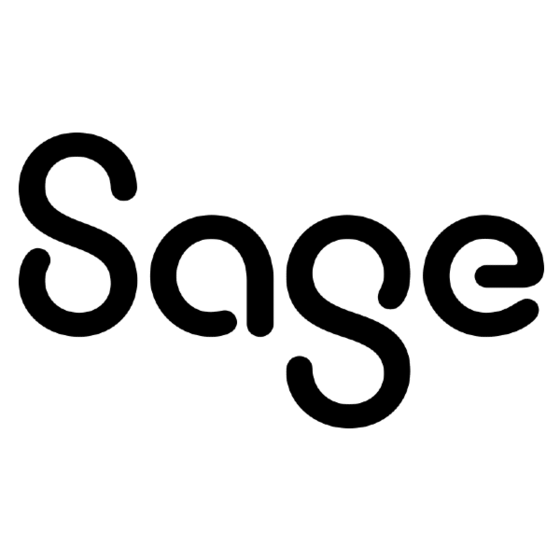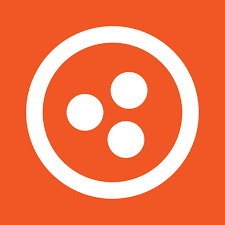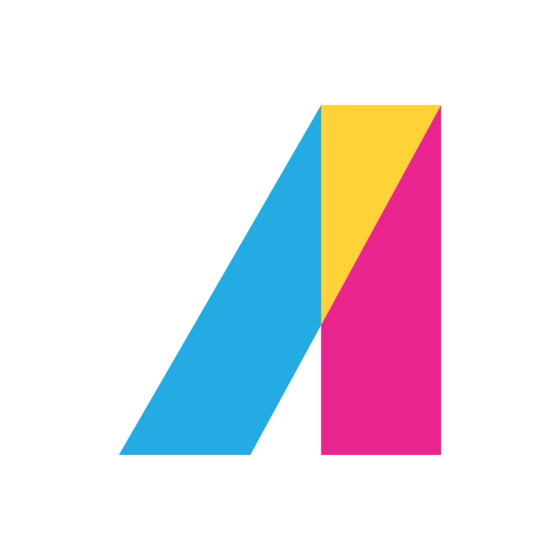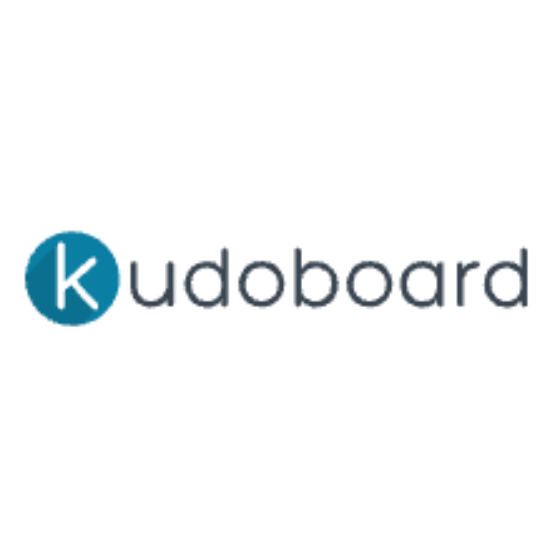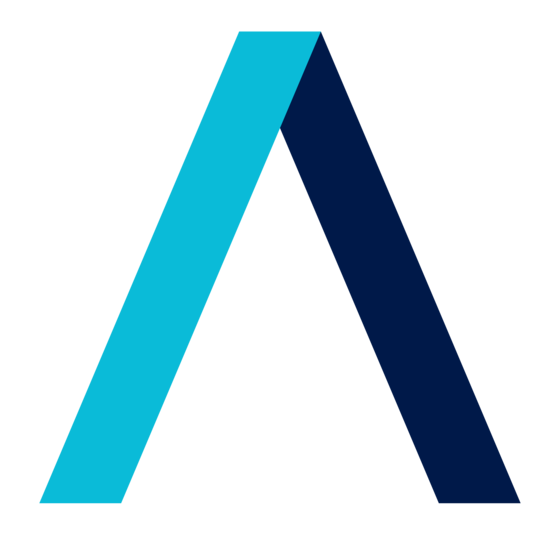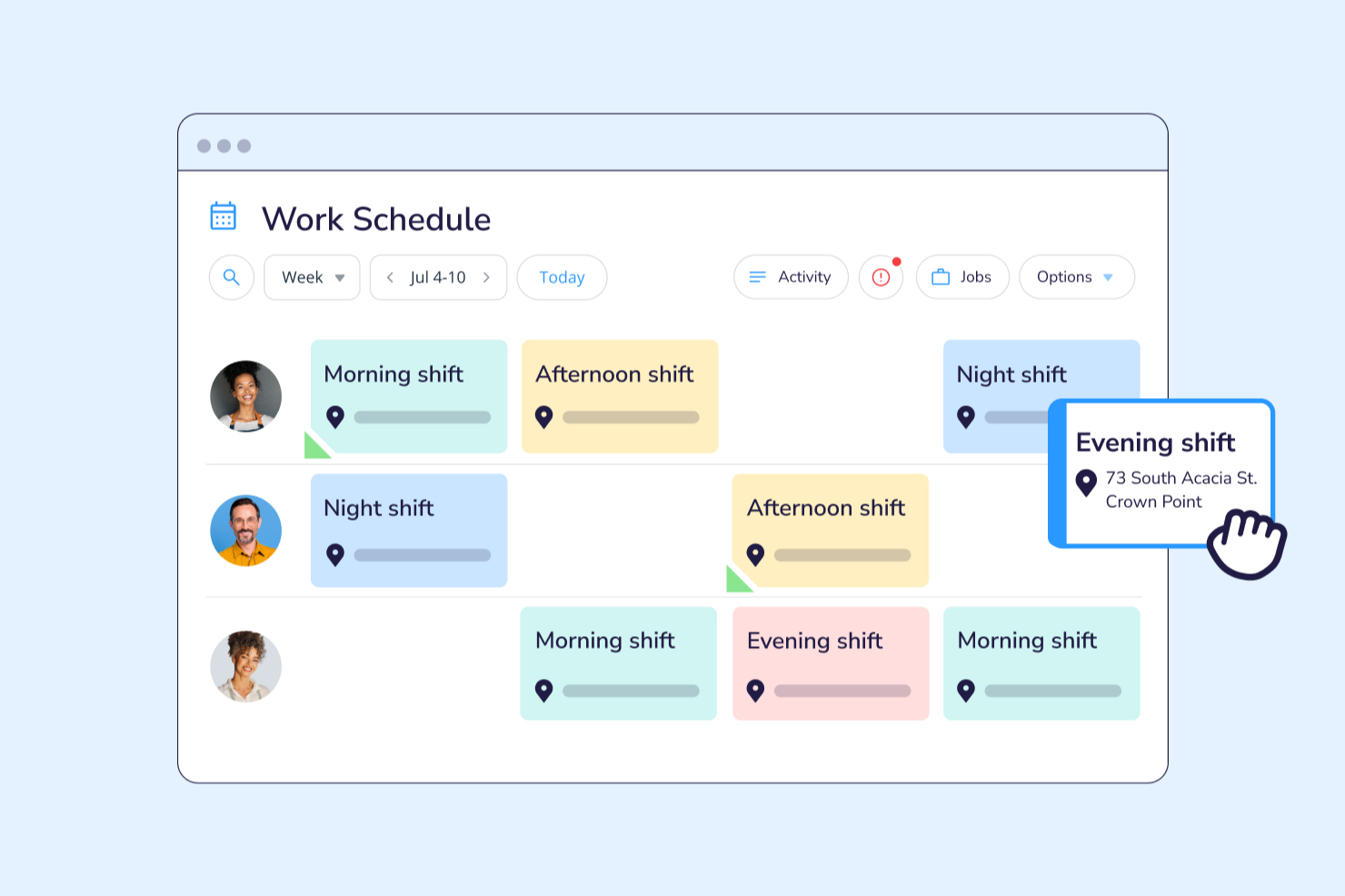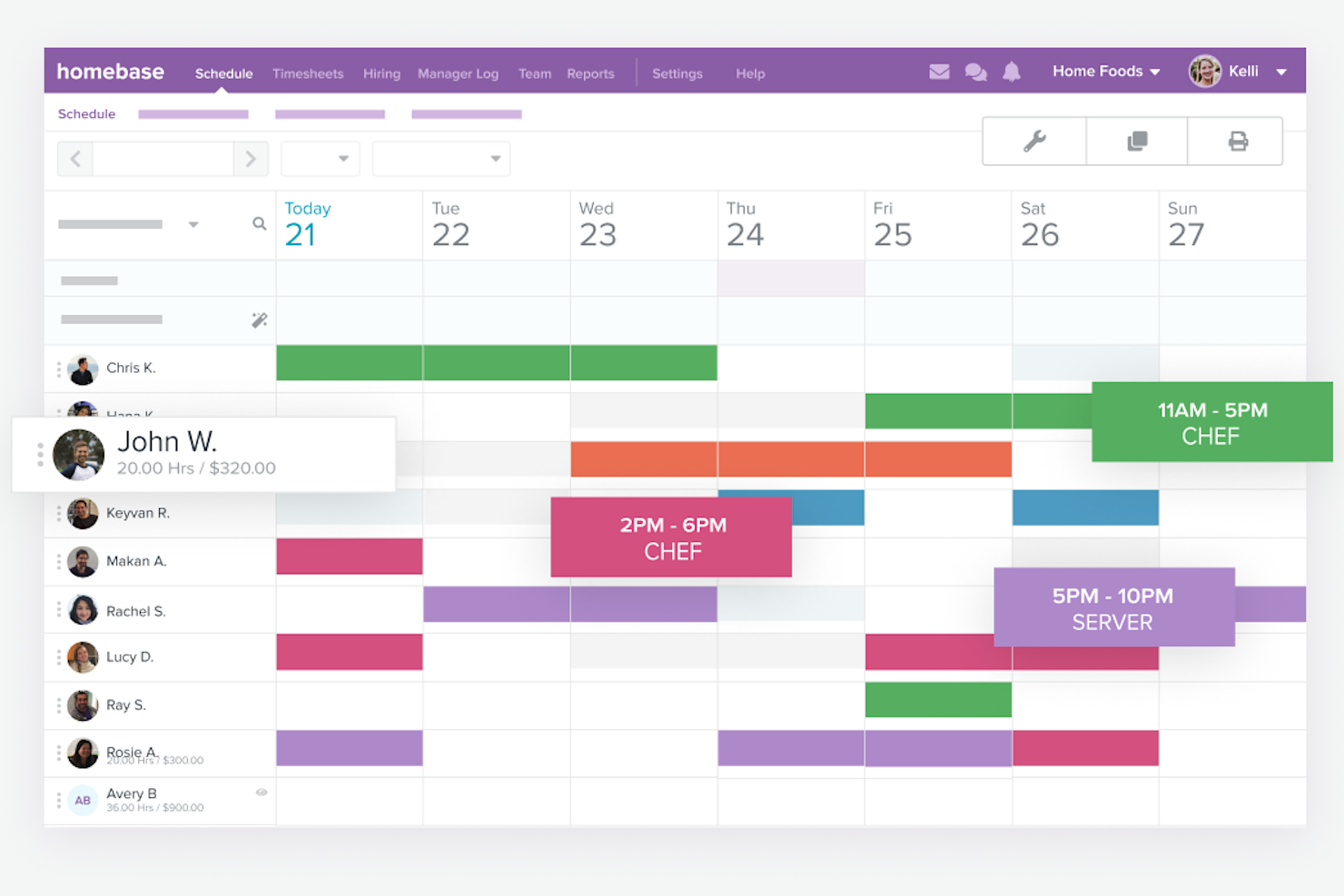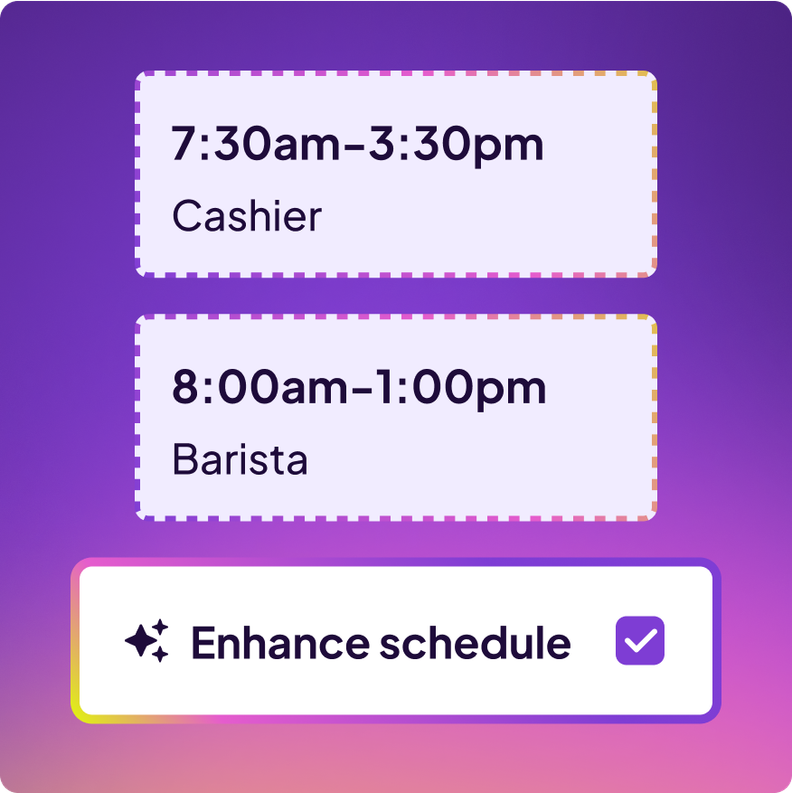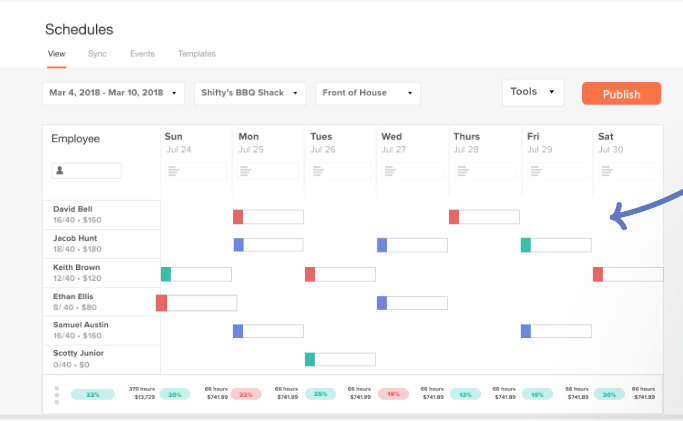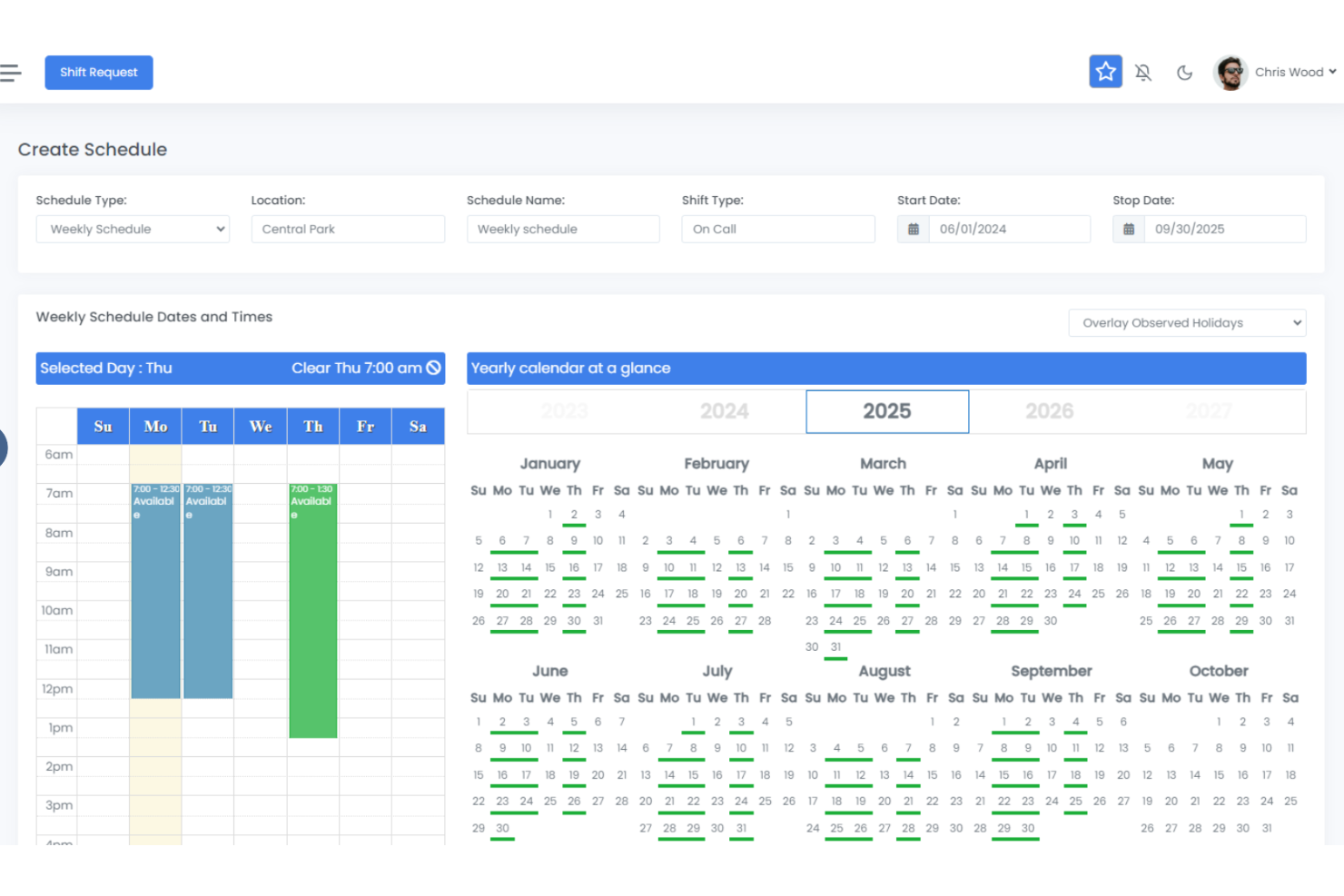10 Best Employee Shift Scheduling Software Shortlist
Here's my pick of the 10 best software from the 30 tools reviewed.
The best employee shift scheduling software helps you build reliable, conflict-free schedules fast—without the chaos of last-minute callouts or manual spreadsheets. Whether you're using basic tools or stuck in a time-consuming manual process, finding a smarter solution can save you hours each week and drastically reduce scheduling stress.
These tools are designed to simplify key tasks like assigning shifts based on availability and skill, tracking hours, handling last-minute changes, and keeping your team in the loop with instant updates. They prevent burnout, avoid coverage gaps, and make sure the right people are always in the right place at the right time.
I’ve personally tested dozens of shift scheduling platforms to see which ones actually deliver. In this guide, I’ll walk you through the best options available today—based on ease of use, automation, customization, and real-world results—so you can confidently choose a system that fits your team’s needs.
Why Trust Our Reviews
We've been testing and reviewing HR software since 2019. As HR professionals ourselves, we know how critical and difficult it is to make the right decision when selecting software.
We invest in deep research to help our audience make better software purchasing decisions. We've tested more than 2,000 tools for different HR use causes and written over 1,000 comprehensive software reviews. Learn how we stay transparent, and take a look at our software review methodology.
Best Employee Shift Scheduling Software: Comparison Chart
This comparison chart summarizes basic pricing, trial, and demo details for my top employee shift scheduling software selections to help you find the best option for your budget and business needs.
| Tool | Best For | Trial Info | Price | ||
|---|---|---|---|---|---|
| 1 | Best scheduling app for planning, distributing & swapping shifts | 14-day free trial + free plan available | From $29/month (for up to 30 users, billed annually) + $0.5/user/month for each additional user | Website | |
| 2 | Best for mobile-first schedule access in Canada | 21-day free trial | From $2.93/user/month | Website | |
| 3 | Best scheduling tool for contract, freelance, and hourly workers | Free plan available | From $20/location/month | Website | |
| 4 | Best for AI-driven auto-scheduling | Not available | From $10/user/month | Website | |
| 5 | Best for managing large teams | Free demo available | Pricing upon request | Website | |
| 6 | Best staff scheduling software for the restaurant industry | 14-day free trial + free plan available | From $24.99/month/location | Website | |
| 7 | Best employee shift scheduling software within a full HRIS platform | 14-day free trial | From $4.50/user/month | Website | |
| 8 | Best shift scheduling for small businesses | 30-day free trial | From $6/employee/month | Website | |
| 9 | Best shift scheduling software for the manufacturing industry | Free demo available | From $45/user/month | Website | |
| 10 | Best shift scheduling software for medical clinics | Free trial available | From $5/employee/month (billed annually) | Website |
-

Absorb LMS
Visit WebsiteThis is an aggregated rating for this tool including ratings from Crozdesk users and ratings from other sites.4.6 -

Kudoboard
Visit WebsiteThis is an aggregated rating for this tool including ratings from Crozdesk users and ratings from other sites.4.8 -

Mitratech Trakstar
Visit WebsiteThis is an aggregated rating for this tool including ratings from Crozdesk users and ratings from other sites.4.3
Best Employee Shift Scheduling Software Reviews
Below, you’ll find my top picks for employee shift scheduling software—each one reviewed with a spotlight on the features that make it stand out. From seamless shift-swapping to automated scheduling and real-time notifications, I’ve called out what each tool does best so you can quickly find the right fit. Don’t miss the bonus picks at the end for even more great options tailored to different team needs.
Best scheduling app for planning, distributing & swapping shifts
Connecteam is an employee shift scheduling system, designed for deskless employees. HR teams, employee managers, and business owners can create and distribute customizable shift schedules, communicate with staff, manage payroll and train non-desk employees in real-time, wherever they’re located.
Why I picked Connecteam: Available on mobile, desktop, or as a kiosk app for tablets, Connecteam was made for organizations where employees don’t spend their working time in the office. From retail and restaurants to manufacturing, construction, field services, and healthcare—Connecteam is used by thousands of businesses across dozens of industries to communicate with and manage their mobile workforce.
You can manage your deskless employees in a single app and, for no extra cost, you get all the tools Connecteam has to offer: dedicated employee communication channels with targeted updates, team engagement features, surveys, polls, searchable company directory, company updates training and onboarding capabilities, a company knowledge base, task management, digital forms and checklists, and more.
Connecteam Standout Features and Integrations:
Features include the ability to assign shifts in a click, duplicate schedules, drag & drop shifts, perform bulk actions, or use templates. You can also oversee your staff's daily activities using shift tasks and shift status updates, with employees able to receive push notifications containing all the information they need in real-time, streamlining mobile workforce scheduling.
Other features in their mobile-first platform include scheduling conflict and overtime alerts, and the recently added auto-scheduling feature, which automatically aligns employee schedules with availability and time off, provides equal shift distribution among all employees, and assigns jobs based on qualifications for proper staffing.
Integrations include Paychex, Xero, Gusto, QuickBooks Payroll (online + desktop), Zapier, Google Calendar, API access, and others.
Agendrix is a Canadian employee scheduling software for shift-based teams in small businesses, offering bilingual support with an English and French app and interface. It combines scheduling, time and attendance tracking, HR management, task assignments, and team communication, all optimized for mobile and multi-location use.
Why I picked Agendrix: Its mobile-first design and focus on Canadian business needs make it stand out among scheduling tools. Agendrix simplifies workforce coordination with collaborative scheduling, automated shift assignments, and quick schedule sharing—ideal for teams across departments or locations.
Agendrix Standout Features and Integrations:
Features include drag-and-drop scheduling, mobile apps, shift templates, and “shift seen” confirmations for employee accountability. Managers can assign tasks to shifts, track availability, and approve time-off requests from a central dashboard. Automated scheduling reduces manual planning, while real-time notifications and collaborative tools let multiple managers build and update schedules together.
Lastly, time-off, holidays, and overtime are managed through integrated time banks synced with payroll.
Integrations include EmployerD, Nethris, Sage 50, Acomba, QuickBooks, Ceridian Powerpay, ADP Workforce Now, Payworks, Lightspeed, Azur, Easypay, BeLocum, Hopem, and Folks HR.
Homebase
Best scheduling tool for contract, freelance, and hourly workers
Homebase is employee shift scheduling software that simplifies managing employee availability, time-off requests, and shift swapping. Businesses can import schedules from previous weeks, set employee wage rates, and comply with labor laws.
The cloud-based platform synchronizes employee scheduling and time-tracking, making schedule creation and management easier for managers. It allows businesses to manage multiple locations through an easy-to-use dashboard, enabling users to add employees, edit schedules, and communicate with employees if necessary.
Why I picked Homebase: The platform offers a labor cost management tool that tracks employee time and labor costs to help businesses reduce workforce expenses. You can set up labor budgets for your whole business or specific departments, then compare the actual labor costs to the budget in real-time. This helps teams identify cost-saving opportunities, optimize labor expenses, and increase profitability.
In addition, Homebase's reporting functionality provides valuable insights into sales and labor data. You can generate custom reports on labor expenses, payroll data, and employee performance, and gain insights to make informed decisions, identify trends, and forecast future labor needs.
Homebase Standout Features and Integrations:
Features include a two-way communication system that allows employees to message each other, pick up shifts for other employees, or suggest swapping their shifts. It also enables real-time updates to help avoid schedules with missing employees.
Its time clock feature allows employees to clock in and out, keeping track of the hours worked, including employee breaks and overtime. Managers can then ensure that employees adhere to their scheduled hours and avoid labor law violations.
Integrations include numerous payroll and point of sale (POS) platforms, including ADP, Rippling, Paychex, Gusto, Restaurant365, TipHaus, Clover, Toast, Square, SurePayroll, and others. With its POS integration, users can automatically view labor costs per shift, reducing overhead expenses. It also lets managers view sales data and discover which employees drive sales.
Lastly, Homebase also offers an employee scheduling app for iOS and Android mobile devices.
New Product Updates from Homebase
AI-Optimized Scheduling Assistant Unveiled by Homebase
Homebase introduced an AI-optimized Scheduling Assistant that creates staff schedules using availability, work history, and time-off, resolves conflicts quickly, and allows new hires to onboard and set availability via phone. More details at Homebase Releases.
Rotageek is a workforce management and scheduling software that helps you manage employee shifts across various sectors like retail and healthcare. It offers a digital platform to make scheduling more straightforward and data-driven, ensuring your team is always aligned with demand.
Why I Picked Rotageek: One of the standout features of Rotageek is its AI-driven auto-scheduling. This feature uses historical data to predict demand and create optimal schedules, ensuring you have the right number of staff at the right times. This means fewer scheduling conflicts and more satisfied employees.
Another reason to choose Rotageek is its demand forecasting capability. By aligning labor with demand, you can make more informed decisions about staffing levels, reducing the risk of overstaffing or understaffing. This feature helps you maintain a balance between operational needs and employee workload.
Rotageek Standout Features and Integrations:
Features include a mobile app that boosts employee engagement by allowing staff to view schedules and request shift swaps. The clocking in/out management feature helps track attendance and manage time efficiently.
Additionally, customizable reporting provides insights into workforce performance, allowing you to make data-driven decisions easily.
Integrations include Appointedd, Axsium, Grosvenor Technology, Hastee, IRIS HR and Payroll, L2P Healthcare, Limber, Level On-Demand Pay, Locums Nest, OB&Co Retail Transformation, Predyktable, and Rethink Productivity.
Pros and cons
Pros:
- AI-powered scheduling maximizes efficiency
- Demand forecasting anticipates staffing needs
- Smooth integration with payroll and HR softwares
Cons:
- Higher starting price might be a barrier for some
- Potential learning curve due to advanced features
Parim Workforce Software is designed to help managers create and oversee employee shift schedules for a variety of industries, including live events, healthcare, and retail. It offers scheduling, time tracking, and compliance tools in one platform, with both a mobile app and client portal to keep everyone connected.
Why I Picked Parim Workforce Software: I chose Parim for its ability to handle complex, high-volume scheduling needs. The event management module is especially valuable for businesses that need to coordinate large teams across multiple job sites, such as festivals, sporting events, or corporate functions.
You can build shift templates, monitor attendance in real time, and ensure staff coverage without manually tracking hundreds of assignments. Parim also includes a self-service portal, so employees can check schedules, request shifts, and update availability—reducing administrative back-and-forth.
Parim Workforce Software Standout Features and Integrations
Features include automated scheduling that matches employees to shifts based on role and location, long-term scheduling for recurring rotas, and integrated payroll and invoicing to speed up payment processing.
Additional tools like absence management, a mobile time clock, and NFC-based safety checks support both day-to-day operations and compliance requirements.
Integrations include ADP Workforce Now, BambooHR, Oracle HCM ATS, Oracle Taleo, SAP SuccessFactors ATS, Workday ATS, Zoho Recruit, Gusto, Paylocity, Zenefits, PeopleHR, and Rippling.
7shifts is a comprehensive workforce management system that's specifically designed to support clients in the restaurant industry. It offers modules for employee scheduling, time tracking, tip management, payroll, and team engagement and communication, and more.
Why I picked 7shifts: Its focus on supporting the hospitality industry make the software standout compared to other business scheduling software. Marketed as the 'all-in-one-app for restaurant teams', 7shifts offers features that make key processes easier, such as shift forecasting to avoid over or under-stafffing, and automatic labor and sales forecasts based on historical data.
7shifts Standout Features and Integrations:
Features include an easy drag-and-drop schedule builder, intuitive manager approval tools, and a free employee scheduling app that supports shift notifications, shift swaps, and time off requests. Your employee data is synced and accessible across all devices, making it mobile-friendly for employees who are Android and iOS users. This allows them to still be up-to-date and productive while mobile.
You can also create shift schedule templates, so you don’t have to start from scratch.
Integrations are available with 80+ popular payroll, POS, and analytics platforms, including ADP RUN, ADP WorkforceNow, Bounce, Cake, Ceridian Dayforce, Clover, DoorDash, GoTab, Gusto, Heartland Payroll, Lightspeed, Oracle, Paychex, Paycom, Paycor, Paylocity, Skip, Square, TalentReef, Toast, UKG Pro and numerous others.
Best employee shift scheduling software within a full HRIS platform
Factorial is an affordable and comprehensive employee shift scheduling software that's well-suited for small businesses since it supports the entire employee lifecycle within one platform.
Why I picked Factorial: With 80,000 customers in 65 countries, Factorial is clearly doing something right. With this system, you get everything you need to manage your scheduling process, meaning you can spend less time doing time-consuming HR tasks and more time focused on what matters instead.
It also includes employee performance management and goals & OKR (objectives and key results) tracking, so you can develop your best team members and ensure you also achieve your organizational goals.
Factorial Standout Features and Integrations:
Features include shift management, time tracking, and standard time management tools. You can manage time, documents, and talent using one centralized HRIS system. Employees can access their personal accounts to request annual leave and check their pay statements. The portal also helps managers communicate with team members and share resources.
Integrations include Google Workspace, Microsoft Outlook, Breezy HR, Okta, Slack, TeamTailor, Workable, Zapier, and many others.
Sage HR performs common shift scheduling tasks with the additional benefit of recruitment support right within the app. You can upload your employee database to your new online staff directory with a few clicks. The product has features like leave management, timesheets, employee tracking and submission, and management of company expenses from the mobile app. Support is available via chat and email.
Sage HR is a good fit for small businesses because of its affordability and its non-techie interface that can be easily operated by solopreneurs and startup business owners.
Sage HR integrates with Slack, Zapier, and G Suite.
Pricing starts at $5.50/user/month and offers a 14-day free trial.
Shiftboard’s advanced employee scheduling software is designed to tackle complex workforce management challenges, such as reducing total labor costs, improving employee retention, and ensuring compliance with stringent scheduling regulations.
Why I picked Shiftboard: Ideal for industries like manufacturing and oil and gas, Shiftboard’s advanced features help shift-based industries tackle the complexity of managing employee schedules using smart automation technology.
The system continuously optimizes coverage to reveal scheduling options that unlock hidden workforce capacity before resorting to overtime. Shiftboard can reassign underutilized workers, fill shifts with flex pools, and prioritize cost-effective staffing solutions.
Shiftboard Standout Features and Integrations:
Features include numerous solutions to solve specific business challenges, including scheduling efficiency, workforce flexibility, labor cost management, union compliance, fatigue management, contingent labor management, and employee retention.
Shiftboard's platform is also easy to configure for your business's unique needs. Scheduling workflows, overtime rules, and policies can be customized to fit specific team, site, or industry needs. Automation can also be tailored for scenarios like production line changes, emergency response, job rotations, and shift-splitting.
Additionally, Shiftboard offers full-cycle compliance capabilities, from error prevention to exception management. The platform continuously enforces a comprehensive set of scheduling rules, including state and local labor laws, fatigue standards, union agreements, and OSHA regulations.
Integrations include UKG, ADP, SAP, Oracle, Workday, Dayforce, Infor, Workato, Workday, PowerBI, Verable, Microsoft Dynamics, Circadian, PlanetTogether, Zaddons, and MyHR.
5280 Clinic is a scheduling tool specifically designed to enhance operational efficiency and prioritize patient care for healthcare providers and medical clinics of all sizes.
Why I picked 5280 Clinic: The company's unique focus on shift scheduling for healthcare establishments makes the software stand out. It offers a range of scheduling options, including weekly, pattern, and individual shift scheduling, providing flexibility to meet the unique needs of different clinics.
In addition, the multiple calendar views offered by 5280 Clinic enable users to gain a comprehensive overview of schedules, facilitating better planning and management.
5280 Clinic Standout Features and Integrations:
Features include AI-powered shift requests, unlimited user groups, coloring rules for shift requests, custom shift filters, a calendar overlay for holidays and time-off requests, native mobile apps for Android and iOS devices, 2FA authentication or the ability to sign-in using Google or Facebook accounts, and robust data encryption parameters.
Another notable feature is its intuitive drag-and-drop interface, which simplifies the process of creating and managing shifts. This interface allows administrators to easily plan and adjust schedules, ensuring optimal coverage and coordination among staff.
Real-time updates ensure that all staff members are aware of any changes to their schedules immediately, reducing the likelihood of miscommunication or scheduling conflicts. Furthermore, the software allows staff to request time off and swap shifts easily.
Integration details are currently not available.
Other Employee Scheduling Software
Here are a few more worthwhile options that didn’t make the best employee scheduling software shortlist. I didn’t have room for a full review for each of these but they are still worthy of consideration:
- Rippling
Software for customizable scheduling needs
- Deel
For global scheduling policies
- Buddy Punch
Shift scheduling software for geofencing and automatic sign-outs
- Paylocity
Employee scheduling tool for ensuring labor law compliance
- WebWork Time Tracker
For unlimited shift scheduling
- Justworks
Staff scheduling software with 24/7 HR support
- BambooHR®
Employee scheduling software for mobile time-off management
- Wrike
Employee scheduling software for balancing workload allocation
- Zoho Shifts
Shift scheduling software for letting employees swap and pick up shifts
- ADP Workforce Now
For midsized business HRIS
- TimeTrex
For automating complex multi-week rotating schedules
- TimeClock Plus
For its flexible approach to shift scheduling for teams
- QuickBooks Time
GPS tracking software for off-site shift work
- When I Work
Employee scheduling software with time tracking
- Skedulo
Employee scheduling software for concurrent scheduling
- Schedule It
Employee scheduling analytics solution
- HotSchedules
Employee scheduling app for scheduling flexibilities
- monday.com
Modular business schedule software for small businesses
- ScheduleAnywhere
Employee schedule requirement tracking
- Findmyshift
Free employee scheduling software for small teams
Related HR Software Reviews
If you still haven't found what you're looking for here, check out these other related tools that we've tested and evaluated:
- HR Software
- Payroll Software
- Recruiting Software
- Employer of Record Services
- Applicant Tracking Systems
- Workforce Management Software
Selection Criteria for Employee Shift Scheduling Software
Selecting the best employee scheduling software for shift swapping required a detailed understanding of common operational needs, such as managing frequent schedule changes efficiently, while accommodating employee preferences.
My approach to choosing the best scheduling software for this list is grounded in thorough research into how these tools optimize scheduling processes and address common pain points. Here's a summary of the criteria I used to decide on my final picks:
Core Employee Shift Scheduling Functionalities (25% of total score): To be considered for inclusion in this list, the software had to fulfill the following common use cases first:
- Automated scheduling based on availability and skill set
- Employee self-service options to help staff request time off and swap shifts
- Real-time updates and notifications for shift changes
- Mobile app accessibility for on-the-go schedule management
- Compliance monitoring tools to ensure compliance with labor laws and company policies
- Comprehensive reporting tools to analyze staffing metrics and costs
Additional Standout Features (25% of total score): To help me hone in on the best employee scheduling software available, I also took note of any unique features, including:
- An integrated time clock or time tracking and attendance tracking abilities
- Advanced AI for predicting staffing needs and suggesting optimal work schedules
- Sophisticated management tools to track labor costs associated with staff schedules
- Internal communication tools for instant messaging and updates within teams
- Customizable reporting features tailored to the specific needs of a business
- Unique integrations with industry-specific tools for a more streamlined workflow
- Customization options to adapt the software to complex scheduling requirements, plus the ability to incorporate company branding elements
Usability (10% of total score): To evaluate the usability of each employee shift scheduling system, I considered the following:
- An intuitive user interface design that offers a balance between powerful features and an easy-to-navigate interface
- User-friendly design elements like drag-and-drop calendars for scheduling and in-app communication tools
- Either dedicated mobile apps or a mobile-friendly user interface that works on both Android and iOS mobile devices or offers SMS updates
- Customizable scheduling templates that reduce administrative work
- Role-based access controls that are simple to set up and manage
Onboarding (10% of total score): To get a sense of each software provider's customer onboarding process, I considered the following factors:
- Quick setup processes and clear guidance for first-time users, including customizable templates
- Comprehensive training materials such as videos or interactive tutorials
- Support for migrating data from previous systems into the new platform
- Any dedicated customer support or guided assistance during the setup process
Customer Support (10% of total score): To evaluate the level of customer support each vendor offered, I considered the following:
- The availability of multiple support channels, including email, phone, and chat
- The existence of a self-service knowledge base, FAQ repository, or other self-help resources to speed up troubleshooting
- The overall quality, responsiveness, and helpfulness of the support team during customer onboarding and post-purchase, as inferred from customer reviews
Value for Price (10% of total score): To gauge the value of each software, I considered the following factors:
- The availability of free trials or demos to test the software before purchasing
- Transparent pricing models that clearly explain which features are included at each level, with no hidden fees
- Tiered pricing plans that cater to different business sizes, from small to medium-sized businesses (SMBs) up to enterprise-level organizations
Customer Reviews (10% of final score): Evaluating customer reviews is the final element of my selection process, which helps me understand how well a product performs in the hands of real users. Here are the factors I considered:
- Whether a product has consistently high ratings across multiple review platforms, indicating a broad level of user satisfaction
- Specific praises, criticisms, or trends in customer feedback that indicate the software's strengths or areas for improvement
- Whether customer feedback specifically mentions issues with ease of use, customer support responsiveness, or lacking features
- Testimonials that highlight beneficial use cases, including mobile app functionality and customization options
By using this assessment framework, I was able to identify the employee shift scheduling software that goes beyond basic requirements to offer additional value through unique features, intuitive usability, smooth onboarding, effective support, and overall value for price.
How to Choose Employee Shift Scheduling Software
Choosing the right employee shift scheduling software can be the difference between smooth operations and constant scheduling chaos. Whether you’re dealing with last-minute absenteeism, shift swaps, or uneven staffing, selecting the right tool is essential for managing schedules efficiently.
Keep these important points in mind to help you make the best choice for your team’s unique needs:
- What shift management challenges are you trying to solve? First, identify the exact challenges you're trying to overcome, such as filling last-minute shifts, minimizing overtime, or balancing employee availability. For example, if no-shows are disrupting your employee schedules, look for scheduling platforms with real-time updates and mobile notifications. Knowing your pain points can guide you to select software with features that directly address your needs.
- What outcomes are important and how will you measure success? Decide what success will look like for your new software. Are you interested in reducing shift conflicts or facilitating better coverage during peak times? Do you want to create a better employee experience for your staff by allowing them to trade shifts? Being clear on your desired outcomes upfront is crucial to avoid wasting valuable time.
- Who are your primary user groups? Consider who will use the software and how many licenses you'll need. To make the most out of the shift-swapping tools, you'll need access for your whole organization, plus role-based access for your HR professionals and managers. Once that's clear, it's also useful to list the needs of your different user groups to ensure they're all met.
- What software integrations do you need? Look for platforms that offer direct integrations with your current tools—like syncing schedules with your payroll software to ensure accurate pay or linking to time clocks for tracking hours. This reduces the risk of errors and saves time spent on manual data entry. If you're aiming to consolidate multiple tools into one, look for an employee scheduling tool that also handles time and attendance tracking.
- Will the software fit into your workflows? Consider how the software would fit into your day-to-day operations. Will it integrate easily or would you need to overhaul your scheduling process? If you’re transitioning from manual scheduling, look for software with an intuitive interface that’s easy for both managers and employees to adopt quickly.
Remember, not all scheduling tools are built the same. By focusing on your specific problems—be they understaffing, overtime management, or ensuring proper shift coverage—you can find employee shift scheduling software that directly solves your issues and improves overall efficiency.
Avoid picking a tool just because it’s popular. Instead, select one that aligns with your exact needs and integrates smoothly into your business operations.
People more than ever need to have clarity into their vacation and time off. The culture is shifting from ‘Can I be gone?’ to letting my manager know ‘I will be gone.’
Trends in Employee Shift Scheduling Software
Employee shift scheduling software has continued to adapt to the changing needs of businesses, while incorporating advancements in technology, such as artificial intelligence (AI). Here are several developing trends that are starting to impact shift scheduling tools:
- Automation and AI-Driven Scheduling: The move towards automation and an increased use of AI for auto-scheduling has become a major trend. This facilitates intelligent staffing decisions, optimizing schedules based on availability, skill set, and labor costs.
- Mobile Accessibility and Real-Time Updates: Mobile applications now offer unparalleled accessibility, allowing employees to view their schedules, swap shifts, and communicate with their teams instantly from their smartphones. For businesses with teams on the field, consider exploring mobile workforce management software to enhance efficiency.
- Advanced Features for Specific Industries: Some scheduling platforms now offer features tailored to the unique needs of specific industries, such as demand forecasting for retail or time tracking for remote and deskless workers, highlighting a trend toward specialization.
- Geofencing and GPS Tracking: Many online scheduling tools are now incorporating geofencing and GPS tracking to automate time tracking and ensure compliance. This feature is particularly beneficial for businesses with mobile workforces, as it enhances the accuracy of time tracking and improves employee management.
These trends in employee scheduling software illustrate a clear move towards creating more intelligent, adaptable, and user-centered solutions. As you continue your search for the best scheduling system for you, pay attention to software providers that offer these new features.
What is Employee Shift Scheduling Software?
Employee shift scheduling software is a digital tool that helps businesses create, manage, and automate employee work schedules. It assigns shifts based on availability, role, and staffing needs—reducing manual work and scheduling conflicts.
Used by HR professionals and managers, this software makes it easier to coordinate teams, communicate changes in real-time, and prevent coverage gaps or compliance issues.
Features of Shift Scheduling Software
When it comes to shift scheduling, the presence or absence of certain key features can make a big difference for a particular use case. Here are the most important features to look for to manage your scheduling challenges effectively:
- Automated Scheduling: This feature automatically generates optimal shift schedules based on employee availability, skills, and business needs, significantly reducing manual effort and potential human errors.
- Shift Swapping and Shuffling: Allowing your employees to independently swap shifts provides a better employee experience and reduces scheduling conflicts. Shift shuffling also allows for a more flexible and fluid workforce management process without bottlenecking all requests to run through management or human resources. If a team member no-shows or is sick, management can shuffle the shift to another available employee to ensure shift coverage.
- Dynamic Visual Calendar: Software with a visually appealing calendar and modern UI touches like drag-and-drop scheduling blocks create a better user experience. Scheduling calendars that support text formatting, color coding, and other aesthetic indicators for shift changes or urgent notifications are extra appealing.
- Real-Time Updates and Notifications: This ensures that any changes to work schedules are immediately distributed to staff through a variety of channels, like email, push notifications, or SMS. This increases visibility for all relevant parties, helping to avoid confusion, miscommunication, and scheduling conflicts.
- Time-Off Management: To streamline the scheduling process, the software should allow staff to request time off from within the app. Integrating leave management functionalities within scheduling software makes the scheduling process smoother, and ensures adequate staffing levels for business demands.
- Reporting and Analytics: The best staff scheduling tools should produce timesheet reports consisting of the logged time, billable hours, and overtime. Beyond that, reports that provide insights into labor costs, staff utilization, and other critical metrics also help improve efficiency, reduce costs, and make better data-driven decisions.
- Schedule Export Options: Exporting staff schedules is a key feature for teams who work offline and need to keep a record of the data outside of the scheduling software. This is especially helpful for teams working remotely and with varying degrees of internet connectivity. Key exporting formats to look for are PDFs, emails, and Excel spreadsheets.
- Compliance Tracking: This feature helps ensure that your staff schedules adhere to labor laws and union rules, reducing the risk of legal issues and penalties. Key aspects to note are monitoring flags for excessive overtime per day, or too many consecutive work days in a row, which fluctuates by industry.
- Employee Self-Service via Mobile Devices: These features help employees submit their availability, request time off, and swap shifts with minimal manager intervention via their preferred mobile device, fostering a sense of autonomy and improving employee satisfaction. Mobile accessibility also ensures staff are notified immediately of any schedule changes, regardless of their current location.
- Software Integrations: The best employee scheduling software should fully integrate with payroll software (or provide payroll features) to simplify employee payments linked to work hours. It should also offer integrations with top email and messaging tools to improve team communication and satisfy other business needs.
By investing in a scheduling solution with these key features, you'll satisfy your current needs and remain adaptable for future changes and growth. Remember, managing work shifts effectively doesn't just improve operational efficiency, it also enhances employee satisfaction by respecting their time and preferences, while monitoring for compliance with labor laws.
Benefits of Shift Scheduling Software
Employee scheduling software can help you transform your current scheduling process into a series of efficient and automated workflows, improving your employee satisfaction levels while also reducing costs.
If you still need a bit more convincing, here are several benefits you can expect to gain by investing in the best employee shift scheduling software that satisfies your business needs:
- Enhanced Flexibility & Agility: The software is purpose-built to facilitate easy shift swaps and adjustments, accommodating employee preferences and last-minute changes. This flexibility ensures that business operations remain smooth despite unforeseen circumstances.
- Improved Team Communication: Shift scheduling software can improve communication between managers and employees thanks to built-in messaging systems. Clear and direct communication helps in reducing misunderstandings and improves shift management.
- Increased Employee Satisfaction: Allowing employees to manage their availability and preferences gives them a sense of control over their work-life balance. Higher satisfaction leads to reduced turnover rates and a more engaged workforce.
- Compliance Assurance: By monitoring adherence to labor laws and company policies, the software reduces the risk of legal issues, protecting businesses from fines while maintaining a positive reputation.
- Reduced Costs: By optimizing staffing levels based on demand, shift scheduling software helps reduce overstaffing and understaffing, directly impacting the bottom line by controlling labor expenses.
As you can see, employee shift scheduling software offers numerous benefits, including enhanced flexibility, improved communication, increased employee morale, improved compliance, and significant cost savings. These benefits make shift scheduling software an invaluable tool for any business aiming to optimize its workforce allocation and overall operational efficiency.
Costs & Pricing for Employee Scheduling Software
Employee shift scheduling software providers offer a range of pricing plans to suit different business sizes and staffing needs. Understanding these options is crucial for selecting the right software that aligns with your organizational requirements and budget constraints. To give you an overview of the pricing landscape, I've compiled the key details into a summary table.
Plan Comparison Table for Employee Shift Scheduling Software
| Plan Type | Average Price | Common Features |
|---|---|---|
| Free | $0 | Basic scheduling, time-off requests, shift swaps, mobile access, and limited to a certain number of users |
| Basic | $2-10 per user/month | Enhanced scheduling capabilities, reporting tools, notifications and alerts, mobile app access, and support for more users than the free plan |
| Standard | $10-25 per user/month | All Basic features, plus time and attendance tracking, advanced reporting, integration with other HR systems, and support for a larger number of users |
| Premium | $25-50 per user/month | All Standard features, plus AI-driven scheduling optimization, customizable features and integrations, dedicated support, advanced analytics, and unlimited users |
| Enterprise | Custom Pricing | All Premium features, plus custom development options, enterprise-level security, personalized training and support, and scalability options for large organizations |
When choosing a plan, try to strike a balance between the features you need and the price you're willing to pay. I also recommend starting with a basic or small business scheduling plan to test the software's effectiveness for your organization, with the option to upgrade as your staffing needs evolve and grow.
There’s always room for negotiation on HR software pricing. Ask for a volume discount! I always recommend trying to get a better deal based on your needs.
For businesses with a small workforce and straightforward scheduling requirements, starting with a free or basic plan might be sufficient. However, there are compelling reasons to consider upgrading to a more advanced plan:
- Complex Scheduling Needs: As your team expands, handling various shifts, fluctuating hours, and multiple roles can become increasingly complex. Advanced plans come with enhanced scheduling tools designed to manage intricate workforce structures more efficiently.
- Shift Swapping and Availability Features: Basic plans may not offer flexible options for shift swapping and availability management. By upgrading, your employees can more easily exchange shifts and update their availability, minimizing scheduling conflicts and unexpected changes.
- Automated Scheduling: Creating schedules manually can be both time-consuming and error-prone. More advanced plans typically feature AI-driven automated scheduling that optimizes shifts based on employee availability and preferences.
- Detailed Reporting and Analytics: To make well-informed decisions, you need access to thorough insights into your scheduling practices and labor costs. Premium plans provide in-depth reporting and analytics capabilities that basic plans do not offer.
- Integration with Payroll and HR Systems: Basic plans often lack integration with other critical HR or payroll systems, necessitating manual data transfers between systems. Upgrading to a higher-tier plan can eliminate this hassle, reducing manual data entry and minimizing errors.
Ultimately, it’s crucial to choose a plan that meets your current needs and resolves your challenges while staying within your budget.
Employee Shift Scheduling Software: Frequently Asked Questions
Before we conclude, I want to cover some FAQs that often come up related to employee scheduling software:
Why is shift scheduling software important?
Shift scheduling software is important because it saves time, reduces errors, and helps ensure that your team is always properly staffed. With automated scheduling, you avoid double-bookings and last-minute conflicts, while also keeping overtime and labor costs in check. Good software also helps you stay compliant with labor laws, improve team communication, and boost employee satisfaction by giving staff more control over their schedules. For HR and operations managers, these tools make complex scheduling much easier to manage and scale.
Can shift scheduling software accommodate the 2-2-3 schedule?
Yes, most advanced shift scheduling platforms can handle a 2-2-3 schedule, also known as the Panama shift. You can set up custom shift patterns and recurring rotations so your team’s unique schedule is always accurate. Check the tool’s template library or customization options to confirm it supports this schedule before making a decision.
The 2-2-3 schedule is especially helpful for industries like manufacturing, healthcare or emergency services since it ensures uninterrupted service while offering employees regular rest periods.
Can shift scheduling software accommodate a 9/80 work schedule?
Yes, many employee scheduling tools support the 9/80 work schedule with alternating Fridays off. Look for software that allows custom shift templates and complex patterns. You’ll be able to assign these schedules to the right employees and visualize work hours easily. Make sure the platform’s reporting features can also handle non-standard overtime calculations.
A 9/80 work schedule is an alternative work arrangement where employees work 80 hours over nine days instead of the traditional ten-day, 40-hour workweek. This schedule allows employees to have every other Friday off while still maintaining full-time hours. It’s a popular shift scheduling pattern within technical fields such as engineering, construction, IT, finance, and healthcare administration.
Are there different types of employee scheduling software?
Yes, there are several types of scheduling tools. Some focus on retail or hospitality, while others are better for healthcare or distributed teams. Options range from basic shift assignment apps, to workforce management suites with time tracking, payroll integrations, and compliance tracking. Decide what features matter most, like automated scheduling, integrations, or industry templates, before choosing.
Here are some common types of scheduling software that I’ve also researched in detail:
-
Employee Scheduling Software for Small Businesses: These tools are often affordable, easy to use, and designed for small teams with simple scheduling needs. They help streamline time-off requests, shift swaps, and availability tracking without a steep learning curve.
- Online Employee Scheduling Software: Cloud-based scheduling tools that let you manage shifts from anywhere. These platforms often include real-time updates, drag-and-drop scheduling, and mobile access, making them ideal for remote or distributed teams.
-
Open Source Employee Scheduling Software: These solutions offer customizable, free-to-use platforms for tech-savvy teams that want full control over their scheduling system. They’re great for businesses with unique workflows or specific compliance needs.
Many scheduling platforms also offer a mobile scheduling app, so employees can view schedules, request changes, clock in and out, and receive updates on the go. If mobility and convenience are priorities, look for a platform that includes a user-friendly scheduling app as part of its plan.
Can I create employee schedules using a mobile app?
Yes, most leading shift scheduling platforms offer mobile apps for both managers and employees. You can build and publish new schedules, send changes instantly, and let your team view their shifts from any device. Look for mobile features like push notifications, shift swap requests, and time-off management for maximum flexibility.
If you’re on the hunt for the best employee scheduling app out there and the options in this list didn’t do it for you, you may find a more comprehensive option in this list of the best HR apps instead.
Is there a free app for scheduling employees?
Yes, there are free scheduling apps such as Homebase, When I Work (basic tier), and Sling that offer core features without an upfront cost. They’re a good starting point for small teams or those with basic needs. Paid plans usually include more advanced options like integrations, reporting, and automation that growing organizations need.
However, free plans will never include the full depth of features that paid plans offer. If you’re running a small team, you may be able to get away with using a free version. Or you can test out their free plan initially, and scale up to add more features once you’re ready.
What integrations should HR look for in employee scheduling platforms?
HR should prioritize platforms that integrate with payroll systems, HRIS, communication tools (like Slack or Teams), and time-tracking apps. These integrations help streamline data transfer, ensure accurate pay, and simplify employee onboarding. Confirm that your chosen software supports direct connections to your company’s existing platforms to minimize manual entry.
How do shift scheduling systems support shift swapping and employee self-service?
Most modern shift scheduling tools let employees request shift swaps or claim open shifts through self-service portals or mobile apps. Managers can approve or deny swaps quickly, which minimizes scheduling conflicts and last-minute changes. This self-service approach saves time, empowers employees, and keeps your shift coverage reliable.
How do I migrate my existing scheduling data into new software?
Most leading scheduling tools offer data import features, allowing you to upload schedules using CSV or Excel files. Some even provide onboarding support or migration tools. Before you start, export your employee lists, shift patterns, and any historic data from your current system. Ask your new provider if they’ll assist with setup for a smooth transition.
Other Workforce Management Tools
If you're looking to improve your workforce management practices beyond shift management, these other top 10 lists are also worth visiting:
- Attendance Tracking Software
- Time and Attendance Tracking Software
- Leave Management Software
- Team Communication Apps
- Employee Communication Software
- Time Tracking Software
- Time Tracking Apps
- Employee Time Clock Software
Final Thoughts
I hope this guide got you one step closer to finding the best employee scheduling software for shift swapping for you. Any one of these systems can help you improve your scheduling process, reduce scheduling conflicts, and optimize your resource management. They can help you save time, improve scheduling efficiency, and ensure your team is well-coordinated and always in the right place at the right time.
Choosing the right scheduling solution comes down to understanding your business needs, whether it’s advanced customization, integration with existing systems, or mobile accessibility. By selecting the right software, you’ll improve efficiency, boost employee satisfaction, and keep your operations running smoothly without the usual scheduling headaches.
Stay in Touch
If you found this guide helpful and want to stay updated on the latest HR tools, software recommendations, and best practices, be sure to subscribe to our free newsletter. You'll get fresh insights delivered straight to your inbox, helping you make the best decisions for your team and business. Don’t miss out—join today!


